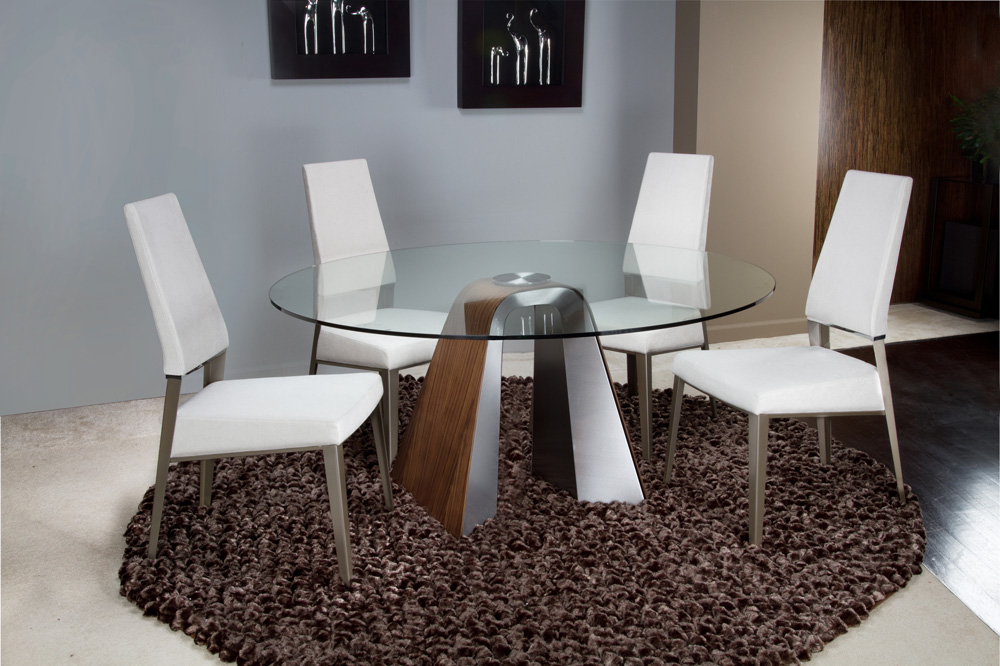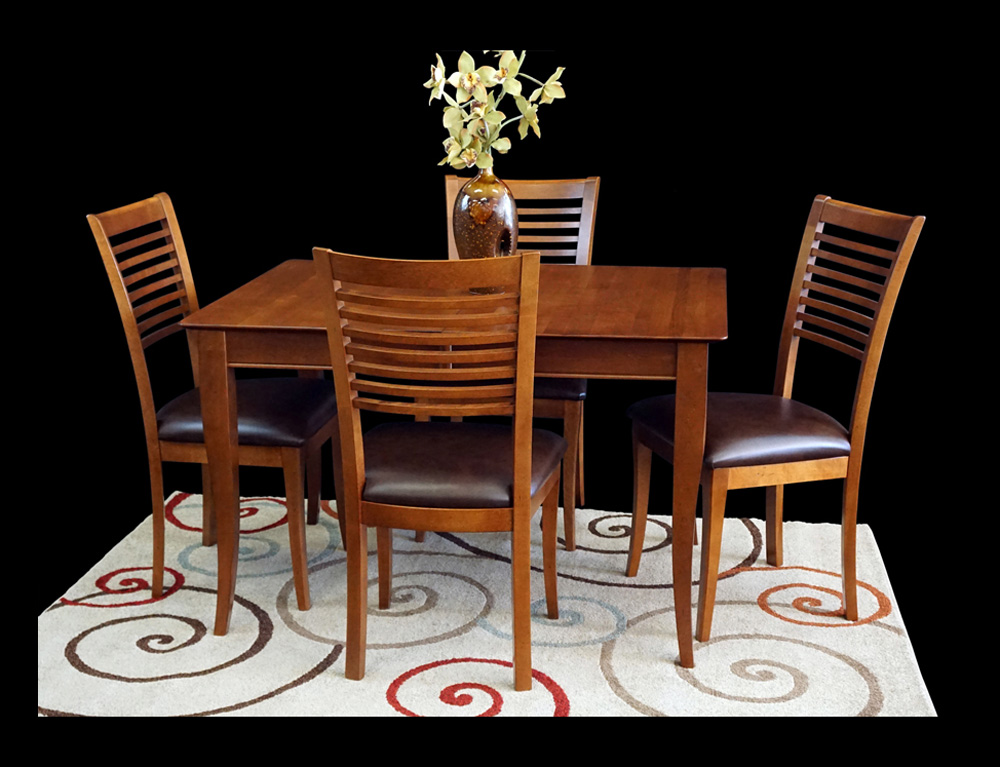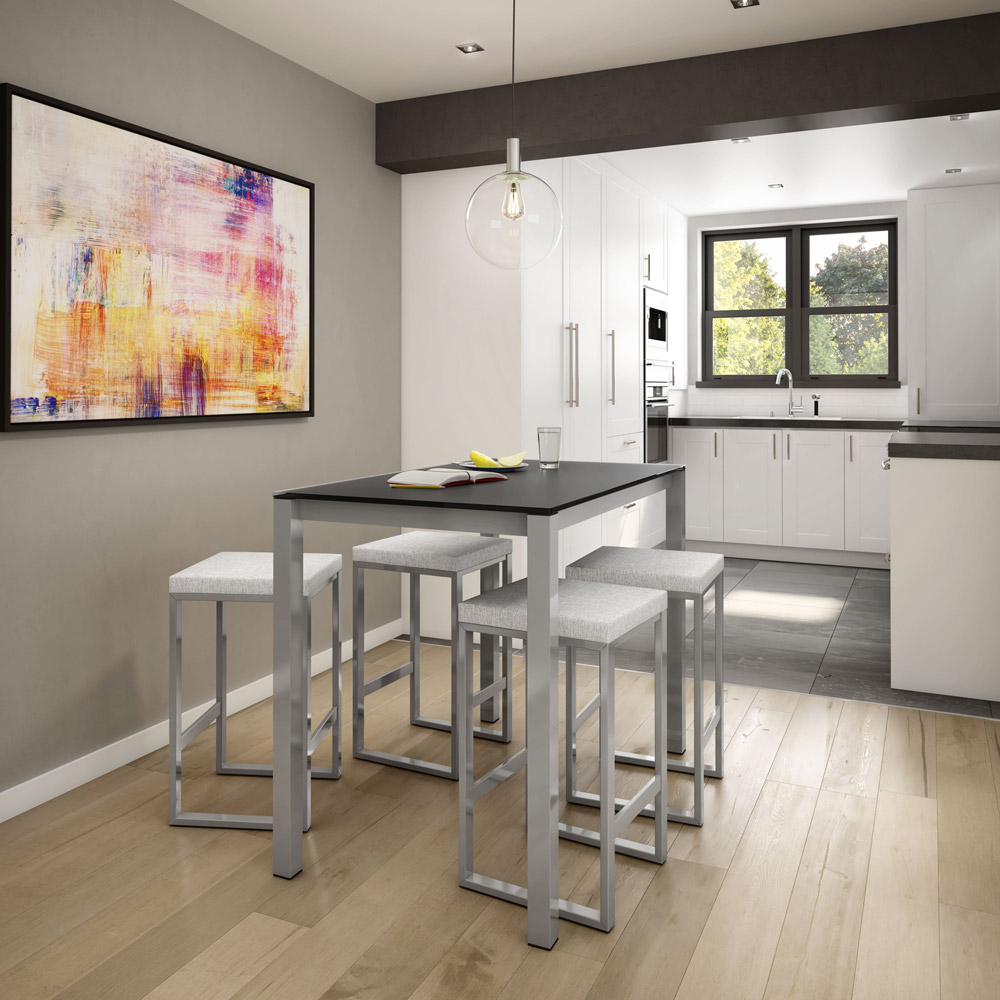When it comes to dining, size does matter. But bigger isn’t always better! Small dining tables offer a cozy ambiance and a unique style, especially if you’re hampered by square footage. It’s not just about eating; it’s about creating memories in an intimate setting.
When it comes to selecting the perfect small dining room table, the challenge becomes not just about aesthetics but also about making the most of your available dining room space. This guide is crafted to help you master the art of the fit and select that dream dining table that complements your space seamlessly.

1. Measure Twice, Purchase Once
Before even starting to shop, arm yourself with accurate measurements of your dining space. Remember, it’s not just about the table’s dimensions but also about ensuring there’s enough room to move chairs and navigate around the table. A good rule of thumb for the appropriate size is to allow at least 36 inches between the table edge and the wall or other furniture. This ensures comfort and ease of movement.
2. Shape Matters
While rectangular dining tables are the most common, don’t limit yourself. Square dining tables can fit perfectly in square rooms or tight spaces. Round tables, on the other hand, can promote more intimate dining experiences. Oval tables offer flexibility, growing larger with extensions if you have guests.
3. Material Considerations
Your table isn’t just functional; it’s a statement piece. Wood tables bring warmth and a timeless appeal. Glass tables can make a room feel spacious and modern, while metal tables offer an industrial or contemporary look. The key is to find a material that resonates with the rest of your decor.
4. Functionality is Key
If your dining area is limited, multifunctional tables can be a game-changer. Look for tables with expandable sections or ones that can double up as work or study areas.
5. Test It Out
Before committing, spend some time at the table, if possible. Is it comfortable? Does it wobble? Can it comfortably seat your family members or guests? These are crucial questions that can only be answered with a test drive.
6. Balance with Chairs
Your dining chairs play a pivotal role in the overall look. They should not only match your table but should also fit comfortably beneath it. Think of the leg space and the height of the chairs in relation to the table.
7. Consider the Room’s Aesthetic
Your table should seamlessly blend with the room’s aesthetic. Whether you’re going for a minimalistic, vintage, or rustic look, the table should enhance the overall vibe, not clash with it.
8. Future-Proofing
While it’s tempting to go with the latest trends, remember that a dining table is an investment. Choose a table that’s not only stylish now but will also remain timeless in its appeal.
When working with a smaller space, selecting the right dining table can make a huge difference in functionality and flow. Here are some types of dining tables that are suitable for small spaces.

- Drop-Leaf Tables: These tables have sides that can be folded down when not in use, freeing up valuable space. When you need more surface area, simply lift the leaves.
- Extendable Dining Tables: These expandable tables can be extended to accommodate more people. They often have an extra leaf or a built-in mechanism to make the table larger.
- Round Tables: Round dining tables can be easier to maneuver around in tight spaces. Without sharp corners, they also help in creating an illusion of more space.
- Square Tables: These can fit neatly into corners or against walls when not in use. They can be ideal for couples or single residents but might be a squeeze for larger groups.
- Pedestal Tables: Tables with a single pedestal base instead of multiple legs can make it easier to position chairs and avoid leg clashes.
- Wall-Mounted Tables: These can be folded down or pushed against the wall when not in use, saving floor space.
- Bar Height or Counter Height Tables: These are taller tables and can be paired with bar stools. They can also double as additional kitchen counters.
- Bench Seating: Pairing a table with a bench can be a space saver. Benches can be tucked under the table when not in use.
- Glass Tables: While the size remains the same, transparent glass tables can create an illusion of more space, as they don’t obstruct the view.
- Nested Tables: A set of tables of decreasing size that can be stacked together. While not traditional dining tables, in very small spaces, the largest of the nested set can be used for dining and then tucked away when not in use.
- Corner Nook Tables: These are designed to fit perfectly into a corner, making use of space that might otherwise be neglected.
- Multipurpose Tables: Some tables serve dual functions. For instance, a table might also offer storage space underneath, or it could even convert from a coffee table height to dining table height.
- Oval Tables: These combine the benefits of round and rectangular tables. They can fit more people than a round table but lack sharp corners, making them more space-efficient.
The art of selecting the perfect small dining table involves understanding your space, being clear about your needs, and ensuring that it syncs with your interior design vision. Armed with these tips, you’re now equipped to make an informed choice, blending functionality with style. Find the perfect dining table for your limited space at California Dining & Barstools. We offer a wide selection of dining sets, dinettes, dining room chairs, barstools and pub tables in every style and material. Visit our two showrooms in the Bay Area for all of your dining room furniture needs.

Small Dining Table FAQ
What’s the best material for a small dining table?
It depends on your preference. Wood is durable and classic, while glass and stainless steel offer a modern touch.
Can I mix different chairs with my table?
Absolutely! Mismatched chairs can bring a unique and eclectic vibe.
How can I protect my wooden table?
Use coasters, placemats, and occasionally polish it. Avoid direct sunlight.
Is a round table better than a square one?
It depends on the room and your preference. Round promotes conversation, while square can be more space-efficient.
How often should I replace my dining table?
A good table can last years! Replace only when necessary or when you need a change.